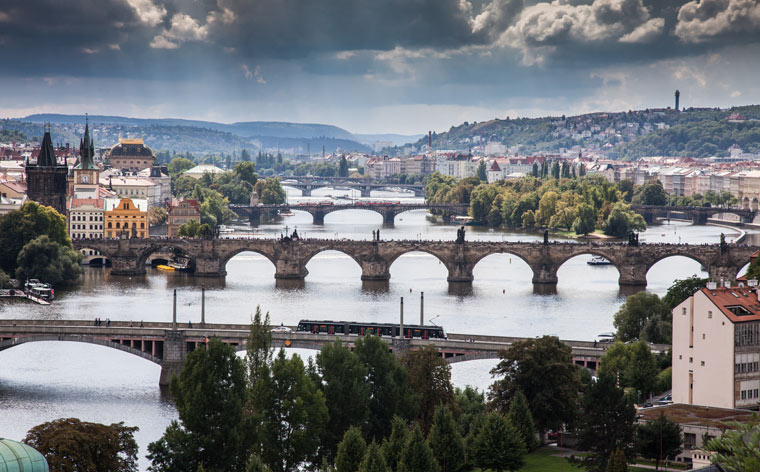A Spain and Portugal road trip, from the south of Portugal to the Cantabrian Mountains, takes in stunning cities like Lisbon, Porto and Santiago de Compostela – as well as lots of under-the-radar gems in between. From urban exploration to lush landscapes and Roman ruins, buckle up and get ready for the second part of the ultimate Iberian road trip.
From urban exploration to lush landscapes and Roman ruins, buckle up and get ready for the second part of the ultimate Iberian road trip. Make sure to have a look at our first part of this itinerary where we take you on a 10-day adventure from northern Spain to Seville.
Day 1 Faro
Start your Spain and Portugal itinerary in Faro, the capital of southern Portugal’s Algarve region. Most travellers fly into the city then immediately leave for resorts along the coast, but they miss out on a treat. It does mean, however, that the city is devoid of many tourist traps and retains an authentic Portuguese feel.
Wander the narrow lanes of the walled old town, where whitewashed houses surround cute, cobbled plazas – the ideal place to nurse a glass of wine and people-watch. Study some of the city’s history with a trip to the medieval cathedral then swing by the marina for some serious boat envy.
If you want to soak up some rays, head to the nearby Praia de Faro beach and if you prefer quirky historical gems, check out the eerie Capela dos Ossos – Bone Chapel – in the 18th-century Nossa Senhora do Carmo church.
Recommended hotel: Hotel Eva
Day 2 Lagos
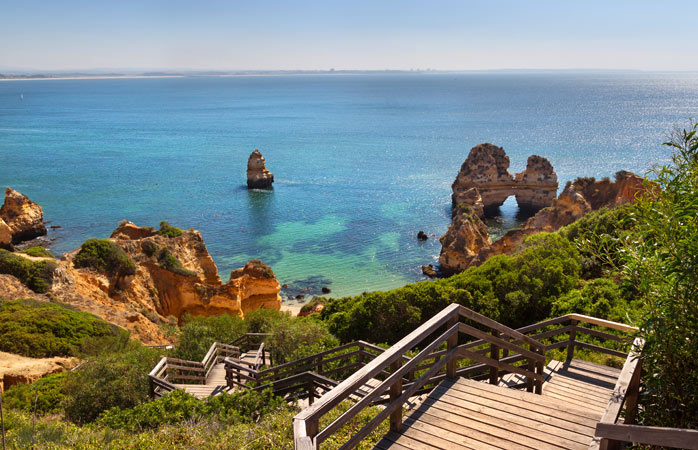
An hour’s drive west along the Algarve and you arrive in Lagos, a city brimming with history, natural beauty and fantastic nightlife. Start the day with a visit to the city’s stunning cliffs – the Ponta da Piedade are a group of rugged formations in golden-coloured rocks. Enjoy the view from above or explore the cliff’s grottos on a boat trip – and imagine all the Portuguese voyages of exploration that sailed from this coastline.
Lunch in the city’s beautiful walled old town is a must; try locally-caught fish or seafood washed down with some local moscatel wine. Conquilhas à Algarvia, clams cooked with onions, garlic and Portuguese sausage, is a local speciality.
Walk off the lunch with a wander down to the Forte da Ponta da Bandeira, a restored 17th-century fortress along the seafront before getting ready to hit the town’s packed bars for a night of fun.
Recommended hotel: Carvi Beach Hotel
Day 3 Évora

Drive 2hr 45min north to Évora, the capital of the Alentejo region and home to an ancient Roman temple and a lively university population. The drive meanders through the centre of Portugal, past the rolling green hills typical of the region, and little villages like Castro Verde, a good place to stop off halfway.
Because of its multitude of historical buildings, the entire town is a Unesco World Heritage Site. Start at the Roman Temple, in Évora’s central square, surrounded by pretty whitewashed buildings. Also worth exploring are the city’s medieval buildings, including the Gothic Cathedral of Évora and its cloisters.
Sample some typical Alentejan cuisine, such as pezinhos de porco de coentrada (pig’s feet with coriander) at restaurant Fialho, which has been serving up local specialties since the mid-1940s. Consider a visit to a winery in what is Portugal’s biggest wine-making region, eg. at Enoturismo Cartuxa, a winery that offers tours and tastings.
The Alentejo region is the world’s biggest producer of cork, so stock up on cork-based souvenirs before you leave.
Recommended hotel: Vitoria Stone Hotel
Day 4 Arrabida Natural Park

Time to walk off all that delicious food and wine – an hour’s drive west on the A6, the main road linking Lisbon with Madrid, will take you to the lush green cliffs of the Arrabida Natural Park, a great place to hike or just lay back on one of its many beautiful beaches. The Praia dos Galapinhos beach is a particular favourite with locals. It’s a perfect backdrop for a relaxing day before the lights of the big city beckon.
Recommended hotel: Rio Art Guesthouse, in adjacent port town Setúbal
Day 5-6 Lisbon
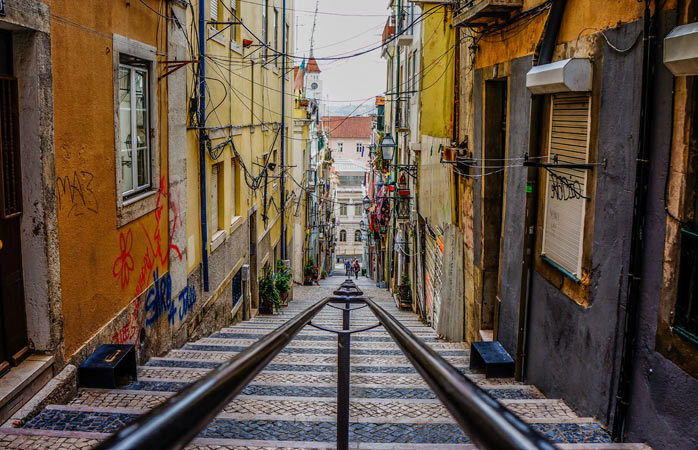
The Portuguese capital is friendly and laid-back, and its steep streets, crumbling tiled walls and many excellent bars and restaurants are a joy to explore.
Catch the number 28 tram, which will take you on a rattling ride through the city’s main neighbourhoods. Don’t miss a trip to the Belém district where you can see the famous Belém Tower. Built in the 16th century, the tower was part of important defences at the mouth of the Tagus river and often the last sight sailors would see before setting off on their journeys of exploration. Take in some modern art at the Berardo Museum then savour a pasteis de nata (Portuguese custard tart) at the place they were invented: Pasteis de Belém.

Start the night with a ginjinha, a sweet cherry liquor sold at beautiful little street kiosks, before checking out the stylish but reasonably-priced Mercado da Ribeira food market. It’s home to food stalls run by some of Lisbon’s best chefs. Try the piri piri chicken, you won’t regret it. Finish off the night with a drink and incredible views over the city at Park, a hidden rooftop bar on top of a multi-storey car park.

Next day, after enjoying one or two more pasteis de nata, drive to Sintra (30 minutes), a town and former royal retreat in the Sintra Mountains known for its pastel-coloured houses. The Palace of Sintra is the best-preserved medieval palace in Portugal and is part of the cultural landscape of Sintra, a Unesco World Heritage Site.
After a morning enjoying the fairytale charm of Sintra, drive the quick 20 minutes to Cascais. Spend the afternoon enjoying the golden sand, cool Atlantic water and good-time atmosphere at the beach of this popular seaside town. And don’t miss the fresh fish and seafood on offer in the beachside restaurants.
Take the seaside road back to Lisbon (40 minutes), where you can spend another night enjoying the city’s nightlife in the ramshackle cool of the Bairro Alto neighbourhood, packed with bohemian bars, shops and restaurants.
Recommended hotel: Lisbon Inn Bica Suites
While in Lisbon, make sure to also check out:
Day 7 Porto

Drive up the coast to Porto (three hours), Portugal’s second-largest city. Look out for surfers on your left as you wind your way up the coastline, and stop off in a seaside town like Nazaré for lunch. In Porto, the multi-coloured buildings of the medieval Ribeira (riverside, along the Douro river) are what first strike you, and walking the area’s narrow, winding streets takes you back hundreds of years.
Work up an appetite walking the steep cobbled steps of the city and checking out its miradouros, lookouts for great views, before digging into a beloved local specialty, the Francesinha, or ‘little Frenchie’. The sandwich, a Portuguese twist on a croque monsieur, contains several different meats and is covered in melted cheese and a tomato and beer-based sauce before being plated up with a generous helping of chips.
You shouldn’t leave Porto without tasting a glass of local port – try one at Portologia wine bar, a stone-walled bar that offers port by the glass as well as tastings.
Recommended hotel: Hotel Premium Porto Downtown
Now that you’re here, make sure to also check out:
Day 8 Santiago de Compostela

Drive 2hr 40min north and across the Spanish border to Santiago de Compostela, the capital of the north-west region of Galicia. Entering Spain, you’ll notice the landscape become greener, the rugged cliffs covered in lush foliage.
Cross the Puente Rande (Rande Bridge) near Vigo for sweeping views across the water. The grand, stone-built Santiago is the end point of the Camino de Santiago (the Way of Saint James), Spain’s famous pilgrimage route. Visit the epic cathedral and look out for delighted pilgrims celebrating reaching the end of their journey in the adjacent square. The Biblical St. James is supposedly buried inside the cathedral.
Sample some local tapas – the pulpo a la gallega, Galician-style octopus boiled then covered in olive oil and paprika, is a particular favourite. Sip on a crisp, local Albariño white wine, a favourite with seafood.
Recommended hotel: Casas Reais Boutique
Day 9 Oviedo
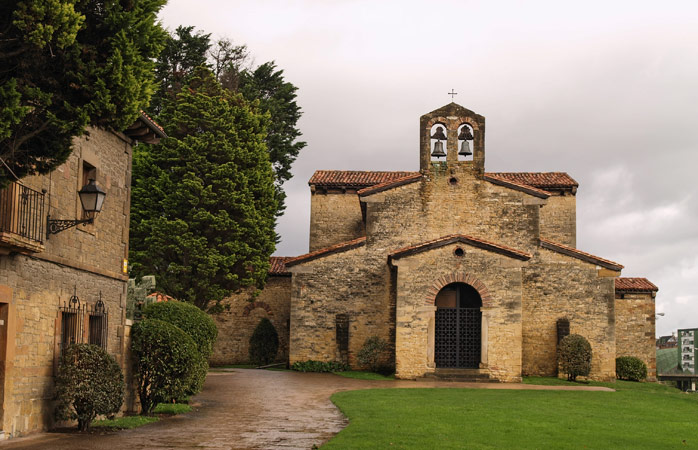
Just over three hours through Galicia’s green countryside and along its northern coast you’ll arrive at Oviedo, the capital of the neighbouring region of Asturias and the birthplace of Spain’s Queen Letizia.
The city seldom features on must-see lists of Spain, but should; its medieval centre and Gothic San Salvador cathedral are fascinating and a young student population lends the city a fun, lively air.
It is also, bizarrely, one of Woody Allen’s favourite destinations. The American film director shot some scenes from his film Vicky Cristina Barcelona there and even has his own statue in the city centre.
Recommended hotel: Hotel & Spa Princesa Munia
Day 10 Cantabrian Mountains
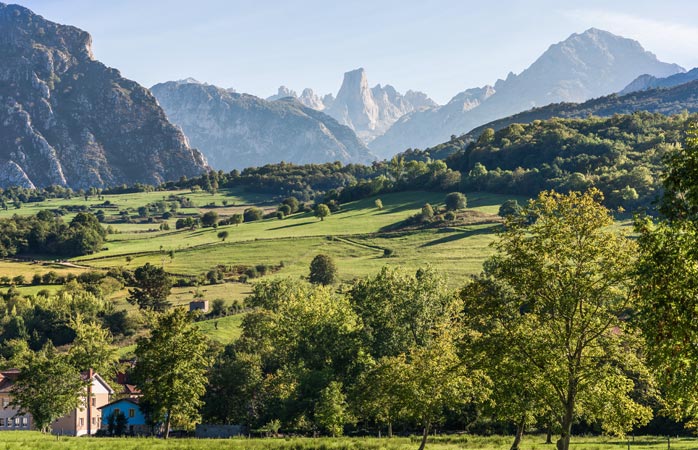
End the trip with a drive into the Cantabrian Mountains, a two-and-a-half hour drive east that encompasses Spain’s dramatic northern coastline and the rising peaks and quaint mountain villages of Cantabria.
The mountains are home to Spain’s endangered brown bear population. Tours led by qualified guides take visitors into the mountains in the hope of spotting these elusive creatures.
Stay in a mountain village such as Cicera, a little hamlet surrounded by green hills, or head towards the coast and spend the night in Santillana del Mar, one of Spain’s most beautiful little towns.
Recommended hotel: Parador de Santillana Gil Blas in Santillana del Mar Fly home from Santander or Bilbao, or head to southern France.






